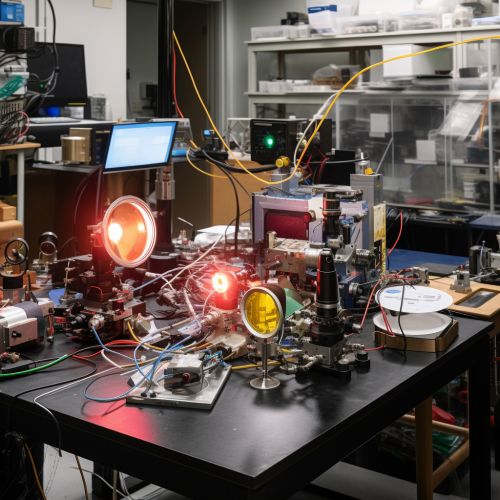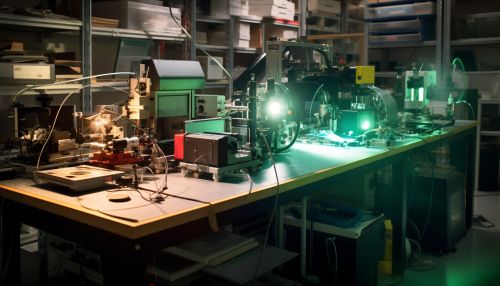Photophysics
Introduction
Photophysics is a branch of physics that deals with the study of the interactions between light (or photons) and matter. This field of study is a sub-discipline of atomic, molecular, and optical physics (AMO physics) and is closely related to quantum mechanics, physical chemistry, and optics. Photophysics has a wide range of applications, including in spectroscopy, photochemistry, and photonics, among others.


Fundamental Concepts
Photophysics is based on several fundamental concepts that are derived from quantum mechanics and the study of light. These include the wave-particle duality of light, the quantum states of matter, and the interactions between light and matter.
Wave-Particle Duality
The wave-particle duality of light is a central concept in photophysics. This principle, which is a cornerstone of quantum mechanics, states that light exhibits both wave-like and particle-like properties. This duality is observed in phenomena such as interference and diffraction (which demonstrate the wave-like nature of light) and the photoelectric effect and Compton scattering (which demonstrate the particle-like nature of light).
Quantum States
The quantum states of matter are another fundamental concept in photophysics. These states, which are described by wave functions, determine the possible energies that a system can have. Transitions between these states, which can be induced by the absorption or emission of light, are a key focus of photophysics.
Light-Matter Interactions
The interactions between light and matter are at the heart of photophysics. These interactions can take several forms, including absorption, emission, and scattering of light by matter. The study of these interactions allows for the understanding and manipulation of a wide range of physical phenomena.
Applications
Photophysics has a wide range of applications in various fields of science and technology. These include spectroscopy, photochemistry, photonics, and more.
Spectroscopy
Spectroscopy is a technique used to study the interactions between matter and electromagnetic radiation. In photophysics, spectroscopy is used to study the absorption and emission spectra of various materials, which can provide information about their electronic and vibrational states.
Photochemistry
Photochemistry is the study of chemical reactions that are induced by light. Photophysics plays a crucial role in understanding these reactions, as it provides the theoretical framework for understanding how light can induce changes in the quantum states of molecules.
Photonics
Photonics is the technology of generating and harnessing light and other forms of radiant energy whose quantum unit is the photon. Photophysics provides the fundamental understanding of light-matter interactions that underpin this technology.
Future Directions
Photophysics continues to be a vibrant field of research, with many exciting future directions. These include the development of new spectroscopic techniques, the exploration of novel light-matter interactions, and the application of photophysics to new areas of science and technology.
